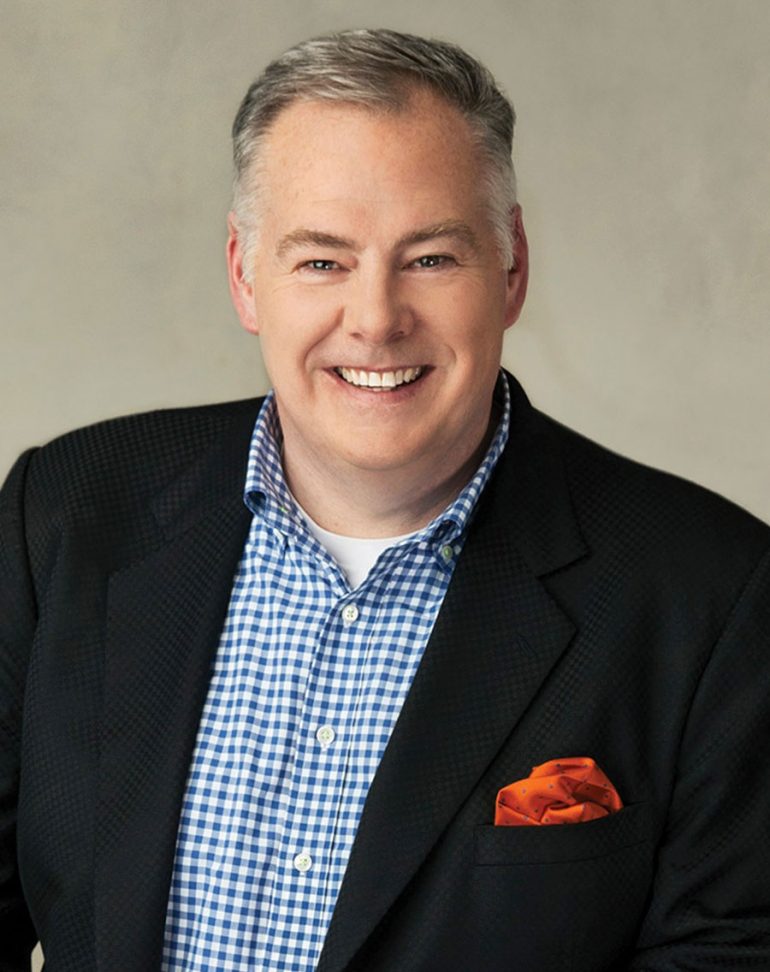Behind every brand delivering simpler experiences for customers is a leader who recognizes the inherent value in keeping things simple. In Simplifiers, Margaret Molloy interviews business leaders who put simplicity to work. Here, Margaret speaks with Grant McLaughlin, former Vice President, Corporate Affairs, Booz Allen Hamilton.
Booz Allen Hamilton provides technology and management consulting in cyber, analytics, digital solutions and engineering to leading Fortune 500 corporations, governments, and not-for-profits across the globe.
Margaret Molloy: What is Booz Allen Hamilton?
Grant McLaughlin: Booz Allen stands at the intersection of strategy, technology, and mission. We partner with public and private sector clients to solve their most difficult challenges through a combination of consulting, technology integration and innovation expertise.
MM: And what does Booz Allen stand for?
GM: At the core is our guiding purpose—to empower people to change the world. This purpose can be detected in how we engage with clients, stakeholders, employees, and how our employees engage with others.
MM: How do you deliver on that promise every day?
GM: That is a high standard that we work towards. We focus on meaningful engagement, which means ensuring the work we do is guided by the question, “How will this make the world better?”
MM: What role does simplicity play in delivering that promise?
GM: I would use the word clarity—clarity of message, of purpose, and of meaning. Getting to a simple, plain language understanding of why something is important, and helping us understand what is essential, is the best way to achieve your goals.
MM: Can you walk us through a use case?
GM: Our primary client is the United States government, and many of the solutions we provide support large agencies like the Department of Defense or the Centers for Medicare and Medicaid Services. We support clients, whether it be through the CIO’s office or a specific business unit, and we’re thinking through—What is the problem we are solving for? What does it ladder up to? What is it driven by? How does messaging match the current administration?
And then really thinking through not only our clients’ level of activity but what is the clients’ customers’ experience? What are we trying to accomplish for that end user? Ultimately, we drive for clear and simple answers to those questions (and others) to support our clients’ initiatives.
MM: Within the US government, why would a department employ your capabilities, and how do you bring those capabilities to life?
GM: Let’s consider our work with Recreation.gov as an example. Recreation.gov provides reservation services, shareable data, and trip-planning tools for federal lands and waters across the United States. Whether you want to camp at the Grand Canyon or attend the White House Easter Egg Roll, Recreation.gov is your go-to resource. We collaborated with clients to overhaul the user experience and now when you visit that website, it feels and operates more like a commercial style travel site. We put a new platform in place to allow simplicity to happen.
MM: Simplicity is a focus of yours. What benefits has Booz Allen experienced from simplifying?
GM: Simplicity is a newer philosophy for us. When our CEO took on his role a few years ago, he challenged a lot of old assumptions, and we’ve reexamined everything from purpose, values, employee attraction, even employee retention, to assess what brings people to Booz Allen—and what gets them to stay. It’s encouraged us all to improve.
One of the areas of focus is around simplicity of language. When I first stepped into this role, we conducted an audit of the way we were communicating. What we found was that our press releases, our materials, and our collateral that was going out were at a post-collegiate reading level. Additionally, we were seeing that the internal messages to our employees were at an even higher reading level because there was an expectation that everybody needed to know everything. Nobody considered the end user—what do we want them to think, feel, or do differently as a result?
We stripped everything down to the fundamentals and rebuilt our materials in a user-friendly way. We even have a guide that not only teaches everybody the ins and outs of how we communicate but also why.
MM: As a leader, how do you keep things “simple” for your team?
GM: It harkens back to that original purpose statement—why are we doing this, and what does the end result accomplish? If it’s not clear to me, how is it going to be clear to somebody else on my team?
MM: Personally speaking, what’s the most recent simple customer experience that inspired or impressed you?
GM: The Every Kid in a Park program run by the United States National Park Service in which fourth graders receive free admission to National Parks is a beautiful experience. Research shows that early exposure creates a lifelong love of the national parks. The United States National Park Service has been running this campaign for a couple of years, expanding it from national parks to include many other federal lands. Every Kid in a Park closely aligns to what I described earlier with Recreation.gov—how do I make this experience simple, clear, and exciting for fourth graders? Now, my son’s face lights up when he approaches the ranger and presents his pass to enter the park.
MM: What are some of the biggest mistakes that brands make with regards to simplifying?
GM: Simplifying without testing or without having a real understanding of the customer mindset. Whomever your end stakeholder is, don’t presume the answer. It’s the mindset of plan the work and work the plan. Planning is critical.
MM: What does “simplicity” mean to you?
GM: It’s about responsiveness and ease of use.
MM: What advice would you give other brands trying to simplify?
GM: Don’t be afraid.
MM: Anything else?
GM: One of the things I’m always amused by is the notion of sacred cows. I appreciate the concept of simplicity because it’s not about being good or bad, but instead, how can I improve? When you approach it with the mindset of trying to make it simpler for someone, more usable, it eliminates barriers.
MM: Thank you, Grant.


